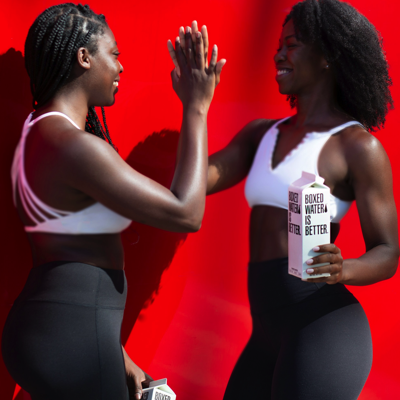Those who train together, succeed together. Discover how training in groups or with a buddy could be the key to your fitness success.
It can be difficult to stay on track with your performance and fitness goals, especially if you’re training alone. Want to be more successful with your plan? Bring a partner along and experience firsthand the world of difference a training buddy can make.
Friends motivate and hold you accountable
Let’s face it, sticking to a routine can be tough. Setting goals on your fitness journey can help you stay on track, but adding a workout buddy to the mix can help you stay accountable. This means showing up not only for yourself but also for your partner. It’s a good way to put an end to those “maybe not today” thoughts and adopt a “let’s get this done” mentality.
Training in groups can also boost your motivation. Research shows that the actions and behaviors of others can have a positive effect on our own. In a study published in the Journal of Social Sciences, researchers found that when exercising in a group, individuals mimic the exercise behaviour of their partner. So it’s important that the person you buddy or group you train with are at a similar level to you and aiming for the same event or race.
Buddies turn hobbies into habits
When you train with a partner or group, it becomes more habitual. Friends can help signify it’s time to exercise and also serve as a reward for getting the session done. Plus, when a behaviour becomes a habit, you use less energy forcing or convincing yourself to do it.
Group exercise is just more fun!
Energy feeds on energy, and the high energy of group training sessions or training with a buddy can make the environment a fun and engaging place to be. It can be a refreshing change to exercising alone, adding a welcome social aspect to your fitness regime. You can mix it up, you don’t have to always train every session with your buddy.
Fun is also a key component to showing up consistently. It’s simple: if you enjoy what you’re doing, you are far more likely to do it. Training alongside other people can bring that fun element to an otherwise challenging or dull session. It could be the mood boost you didn’t know you needed.
Emotional support and encouragement
Pushing your limits and discovering yourself can be tough, and sometimes daunting aspect of a training programme. Having an accountability buddy alongside you to share in your successes and setbacks can be super helpful.
Some research even shows that joining an exercise group or sports club can protect against depression. The emotional support provided by an exercise partner or group can also reduce anxiety and stress levels, and help you stay on track to reach your fitness goals.
A study published in The Journal of the American Osteopathic Association discovered that exercising in a group could reduce stress by 26% compared to people who trained alone. Although interestingly individuals who went the solo route were found to put in more effort, they experienced no significant improvement in their stress levels and a limited improvement in their quality of life.
Friendly competition is motivating
When it comes to long-term fitness in endurance sports, ultimately you are competing against yourself to be the best that you can be. But if you’re looking for an extra boost of motivation, a little bit of friendly competition and banter could be just what you need to smash a target or hit a new PB. After all if we didn’t enjoy competing we would probably not be doing what we do right?
In fact, researchers at the University of Pennsylvania found that if you really want to get motivated to train, competition is far more effective than friendly support. When we place ourselves in a competitive environment, everybody raises the bar, so if others push harder, you probably will too. Overall, the study found that competition was the biggest motivating factor to training.
So to wrap this up…
We’re all striving to be fitter, stronger, and faster, but you don’t have to make getting there any harder than it needs to be by going it alone. Whether you need more accountability in the day-to-day training grind, want a boost of motivation to push hard, or are simply looking to put a bit more fun into your training week, then being part of a group or training with a partner could be the key to unlocking more from your plan.




